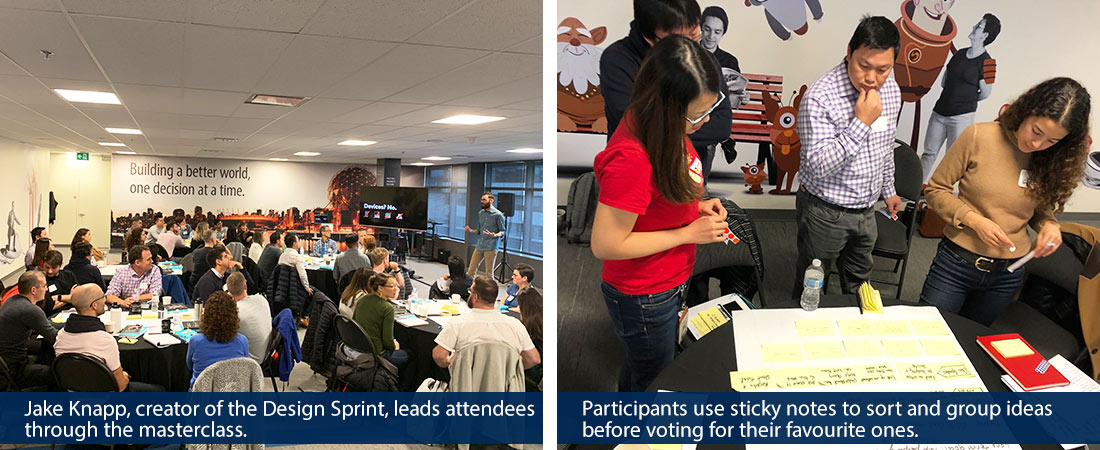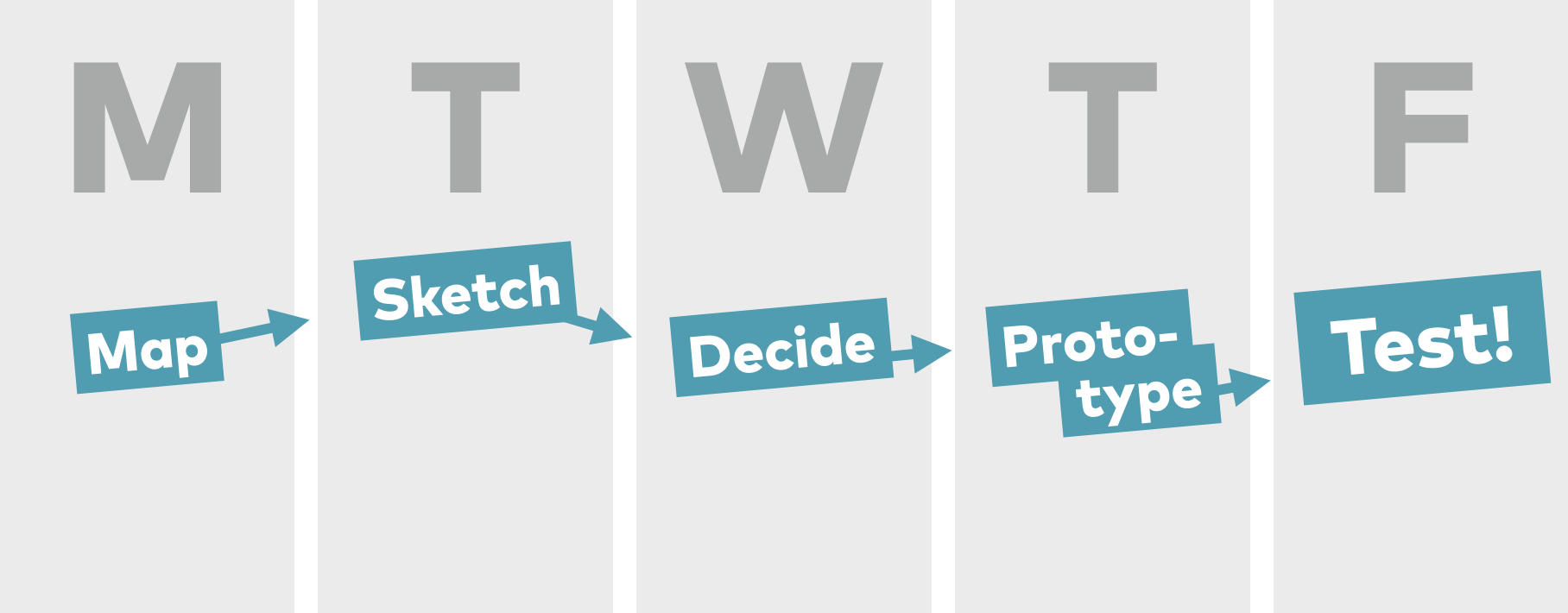Knapp Time @ Copperleaf
On October 15th, Copperleaf™ hosted a Design Sprint masterclass at our Vancouver office. The workshop was run by Jake Knapp, author of New York Times bestseller “Sprint”, and Douglas Ferguson, President of Voltage Control, who led designers, developers, engineers, marketers, and product managers from Copperleaf and a variety of local tech companies through the Design Sprint process.
Jake talked to us about his journey as a designer and the personal and professional experiences that led him to create the Design Sprint. Originally developed while he was at Google Ventures, a Design Sprint is a five-day process where stakeholders align around a specific problem and rapidly prototype and test a potential solution. Jake led us through a complete sprint—super-compressed into only 8 hours!
The Five Stages of the Design Sprint (Image Courtesy of www.thesprintbook.com/how)
Learning By Doing
We spent the day going through the first half of a Design Sprint, which focused on the map, sketch and decide phases, and then briefly talked about the final stages of prototyping and testing.
Diving into the workshop with stickies, thick markers, and trusty dot stickers, we began to create our prototypes. The energy in the room hummed as participants came up with innovative ideas for our hypothetical company.
After crafting our map, we voted on our focus, sketched solutions, and stormed toward an authentic-feeling prototype the team was ideating towards.

Key Takeaways
- Design Sprints are excellent tools to validate a well-defined problem:
- the best-case scenario is that you gain insight into how customers will react before investing the time, effort, and expense of building a real product
- the worst-case scenario is that you will end up with a better idea of what to do next
- Plan for some immediate follow-up time after the sprint to address the feedback you receive to avoid losing momentum.
- Many of the tools used during a sprint (such as user experience mapping) can be used outside of the Design Sprint process. These types of tools will help converge and drive alignment within an organization.
- A prototype concentrates the discussion on a tangible ‘thing’ which is much harder to ignore or just throw away, compared to an abstract thing like an idea. A prototype shows the art of the possible. Instead of trying to talk your way to an idea of next steps, try bringing a prototype, sticky notes, sharpies and voting dots.
- Create a space where the loudest voice isn’t the only one heard. Great ideas come when all perspectives and opinions in the room are valued.
- Jake is taller than anticipated.
It was a great day of learning from the Design Sprint creator himself. The class delivered insight into a more efficient and effective way of solving problems, and gave Copperleafers a good opportunity to network with the local design and development community. We learned a lot and are looking forward to implementing the sprint process into our next design project!
At Copperleaf, we believe design is one of the key differentiators that will keep us at the forefront of innovation in the enterprise software space. Check out more of our Design @ Copperleaf blog series which explores how we leverage design thinking to drive new ideas, empower our people to take risks, validate assumptions, and retain our competitive advantage.


